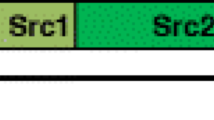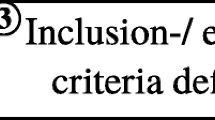Abstract
Interaction traces (ITs) are developers’ logs collected while developers maintain or evolve software systems. Researchers use ITs to study developers’ editing styles and recommend relevant program entities when developers perform changes on source code. However, when using ITs, they make assumptions that may not necessarily be true. This article assesses the extent to which researchers’ assumptions are true and examines noise in ITs. It also investigates the impact of noise on previous studies. This article describes a quasi-experiment collecting both Mylyn ITs and video-screen captures while 15 participants performed four realistic software maintenance tasks. It assesses the noise in ITs by comparing Mylyn ITs and the ITs obtained from the video captures. It proposes an approach to correct noise and uses this approach to revisit previous studies. The collected data show that Mylyn ITs can miss, on average, about 6% of the time spent by participants performing tasks and can contain, on average, about 85% of false edit events, which are not real changes to the source code. The approach to correct noise reveals about 45% of misclassification of ITs. It can improve the precision and recall of recommendation systems from the literature by up to 56% and 62%, respectively. Mylyn ITs include noise that biases subsequent studies and, thus, can prevent researchers from assisting developers effectively. They must be cleaned before use in studies and recommendation systems. The results on Mylyn ITs open new perspectives for the investigation of noise in ITs generated by other monitoring tools such as DFlow, FeedBag, and Mimec, and for future studies based on ITs.














Similar content being viewed by others
Notes
Example of IT shared in December 2015 by a developer when fixing a bug: https://bugs.eclipse.org/bugs/show_bug.cgi?id=483421
The archived systems are available in the replication package.
The inactivity periods is practically impossible to monitor. Even being able to identify these inactivity periods from the videos, it’s still hard to know what developers were doing (e.g., thinking vs. reading the description of the task). However, we mainly use the detection of the mouse focus to know whether developers were reading (visual exploration) the code. Sometimes, developers were reading code when scrolling. Thus, reading code and scrolling the editor could be interchangeably and this does not affect our study regarding the kind of activity performed by the developers as the kind of activity that is mainly used in the following is the edit activity which is easy to identify.
The original version of this article (Soh et al. 2015) includes a mistake in quantifying the proportion of false edit events, which we corrected in this version. This correction affects only the proportion of the false edit events and does not affect our conclusions.
References
Amann S, Proksch S, Nadi S (2016) Feedbag: an interaction tracker for visual studio 24th IEEE international conference on program comprehension, ICPC 2016, pp 1–3
Bantelay F, Zanjani M, Kagdi H (2013) Comparing and combining evolutionary couplings from interactions and commits 2013 20th working conference on reverse engineering (WCRE), pp 311– 320
Beller M, Gousios G, Panichella A, Zaidman A (2015) When, how, and why developers (do not) test in their ides Proceedings of the 2015 10th joint meeting on foundations of software engineering, ESEC/FSE 2015, pp 179–190
Bouckaert RR, Frank E, Hall M, Kirkby R, Reutemann P, Seewald A, Scuse D (2013) WEKA Manual for Version 3-7-8
Chawla NV, Bowyer KW, Hall LO, Kegelmeyer WP (2002) Smote: synthetic minority over-sampling technique. J Artif Int Res 16(1):321–357
DeLine R, Czerwinski M, Robertson G (2005) Easing program comprehension by sharing navigation data 2005 IEEE symposium on visual languages and human-centric computing, pp 241–248
Fritz T, Shepherd DC, Kevic K, Snipes W, Bräunlich C (2014) Developers’ code context models for change tasks Proceedings of the 22nd ACM SIGSOFT international symposium on foundations of software engineering, FSE 2014, pp 7–18
Kamei Y, Monden A, Matsumoto S, Kakimoto T, Matsumoto KI (2007) The effects of over and under sampling on fault-prone module detection First international symposium on empirical software engineering and measurement, 2007. ESEM 2007, pp 196–204
Kersten M, Murphy GC (2005) Mylar: a degree-of-interest model for ides Proceedings of the 4th international conference on aspect-oriented software development, AOSD ’05, pp 159–168
Kersten M, Murphy GC (2006) Using task context to improve programmer productivity Proceedings of the 14th ACM SIGSOFT/FSE, pp 1–11
Ko A, Myers B, Coblenz M, Aung H (2006) An exploratory study of how developers seek, relate, and collect relevant information during software maintenance tasks. IEEE Trans Softw Eng 32(12):971–987
Kuhn M (2016) caret: classification and regression training. https://cran.r-project.org/web/packages/caret/index.html
Kuhn M (2008) Building predictive models in r using the caret package. J Stat Softw 28(5):1–26
Layman LM (2009) Information needs of developers for program comprehension during software maintenance tasks. Ph.D. thesis, North Carolina State University
Layman LM, Williams LA, St. Amant R (2008) Mimec: intelligent user notification of faults in the eclipse ide Proceedings of the 2008 international workshop on cooperative and human aspects of software engineering, CHASE ’08, pp 73–76
Lee S, Kang S (2013) Clustering navigation sequences to create contexts for guiding code navigation. J Syst Softw
Lee S, Kang S, Kim S, Staats M (2015) The impact of view histories on edit recommendations. IEEE Trans Softw Eng 41(3):314–330
Minelli R, Mocci A, Lanza M, Kobayashi T (2014) Quantifying program comprehension with interaction data 14th international conference on quality software, QSIC 2014
Murphy GC, Kersten M, Findlater L (2006) How are java software developers using the eclipse IDE IEEE Soft 23(4):76–83
Parnin C, Rugaber S (2011) Resumption strategies for interrupted programming tasks. Softw Qual J 19(1): 5–34
Robbes R, Lanza M (2010) Improving code completion with program history. Autom Softw Eng 17(2): 181–212
Robbes R, Röthlisberger D (2013) Using developer interaction data to compare expertise metrics Proceedings MSR, pp 297–300
Robillard M, Walker R, Zimmermann T (2010) Recommendation systems for software engineering. IEEE Soft 27(4):80–86
Romano J, Kromrey JD, Coraggio J, Skowronek J (2006) Appropriate statistics for ordinal level data: should we really be using t-test and cohen’s d for evaluating group differences on the nsse and other surveys Annual meeting of the Florida Association of Institutional Research
Rousseeuw P (1987) Silhouettes: a graphical aid to the interpretation and validation of cluster analysis. J Comput Appl Math 20(1):53–65
Sanchez H, Robbes R, Gonzalez VM (2015) An empirical study of work fragmentation in software evolution tasks Proceedings SANER, pp 251–260
Singer J, Elves R, Storey MA (2005) Navtracks: supporting naviga-tion in software maintenance International conference on software maintenance, pp 325–334
Soh Z, Drioul T, Rappe PA, Khomh F, Gueheneuc YG, Habra N (2015) Noises in interaction traces data and their impact on previous research studies 9th International symposium on empirical software engineering and measurement. To appear
Soh Z, Khomh F, Gueheneuc YG, Antoniol G (2013) Towards understanding how developers spend their effort during maintenance activities 2013 20th working conference on reverse engineering (WCRE), pp 152–161
Soh Z, Khomh F, Gueheneuc YG, Antoniol G, Adams B (2013) On the effect of program exploration on maintenance tasks 2013 20th Working conference on reverse engineering (WCRE), pp 391– 400
Tan PN, Steinbach M, Kumar V (2006) Introduction to data mining, chap. 6: Association analysis: basic concepts and algorithms. Pearson
Tantithamthavorn C, McIntosh S, Hassan AE, Matsumoto K (2016) Automated parameter optimization of classification techniques for defect prediction models Proceedings of the 38th international conference on software engineering, ICSE ’16, pp 321–332
Witten IH, Frank E (2005) Data mining: practical machine learning tools and techniques. Morgan Kaufmann Publishers Inc, Morgan
Wohlin C, Runeson P, Höst M., Ohlsson MC, Regnell B, Wesslén A (2000) Experimentation in software engineering—an introduction. Kluwer Academic Publishers, Kluwer
Ying A, Robillard M (2011) The influence of the task on programmer behaviour Proceedings ICPC, pp 31–40
Zanjani MB, Swartzendruber G, Kagdi H (2014) Impact analysis of change requests on source code based on interaction and commit histories Proceedings of the 11th working conference on mining software repositories, MSR 2014, pp 162–171
Zhang F, Khomh F, Zou Y, Hassan AE (2012) An empirical study of the effect of file editing patterns on software quality Proceedings WCRE, pp 456–465
Zhang F, Zheng Q, Zou Y, Hassan AE (2016) Cross-project defect prediction using a connectivity-based unsupervised classifier Proceedings of the 38th international conference on software engineering, ICSE ’16, pp 309–320
Zimmermann T, Weißgerber P, Diehl S, Zeller A (2005) Mining version histories to guide software changes. IEEE Trans Softw Eng 31(6):429–445
Acknowledgment
The authors greatly thanks the participants of the experiments described in this article. This study would not have been possible without their participation. Many thanks also go to intern students Thomas Drioul and Pierre-Antoine Rappe, who transcribed the video captures. Thanks to Seonah Lee and colleagues for providing us with the data and the implementation of their recommendation system. We also thank Annie Ying and Martin Robillard for making their script publicly available for use. The authors are grateful to the editors and anonymous reviewers for their detailed feedback and useful suggestions to improve the earlier version of this article. This work has been partially funded by a NSERC Discovery grant and the Canada Research Chairs on Multi-language Patterns and on Software Change and Evolution.
Author information
Authors and Affiliations
Corresponding author
Additional information
Communicated by: Harald Gall
Rights and permissions
About this article
Cite this article
Soh, Z., Khomh, F., Guéhéneuc, YG. et al. Noise in Mylyn interaction traces and its impact on developers and recommendation systems. Empir Software Eng 23, 645–692 (2018). https://doi.org/10.1007/s10664-017-9529-x
Published:
Issue Date:
DOI: https://doi.org/10.1007/s10664-017-9529-x




